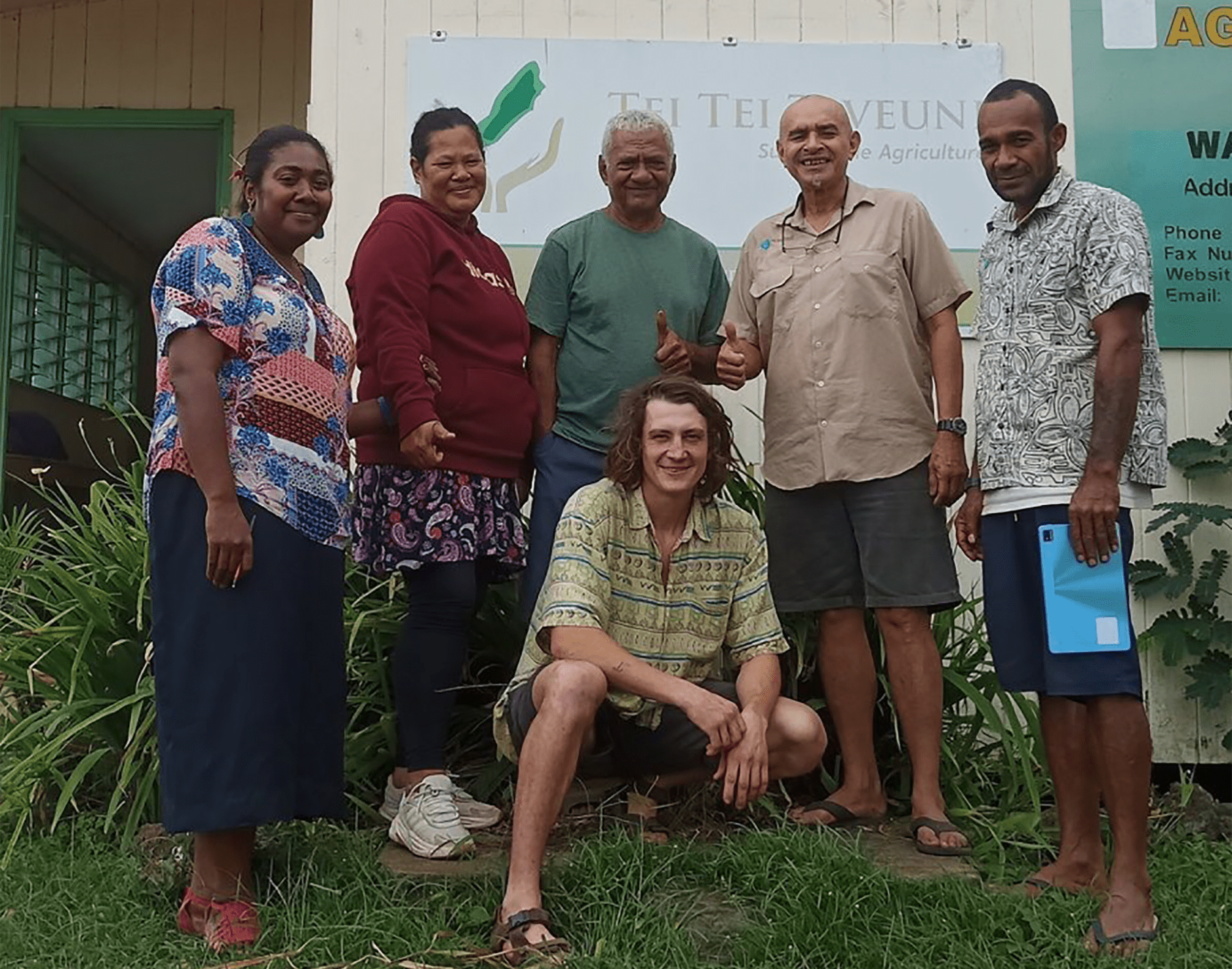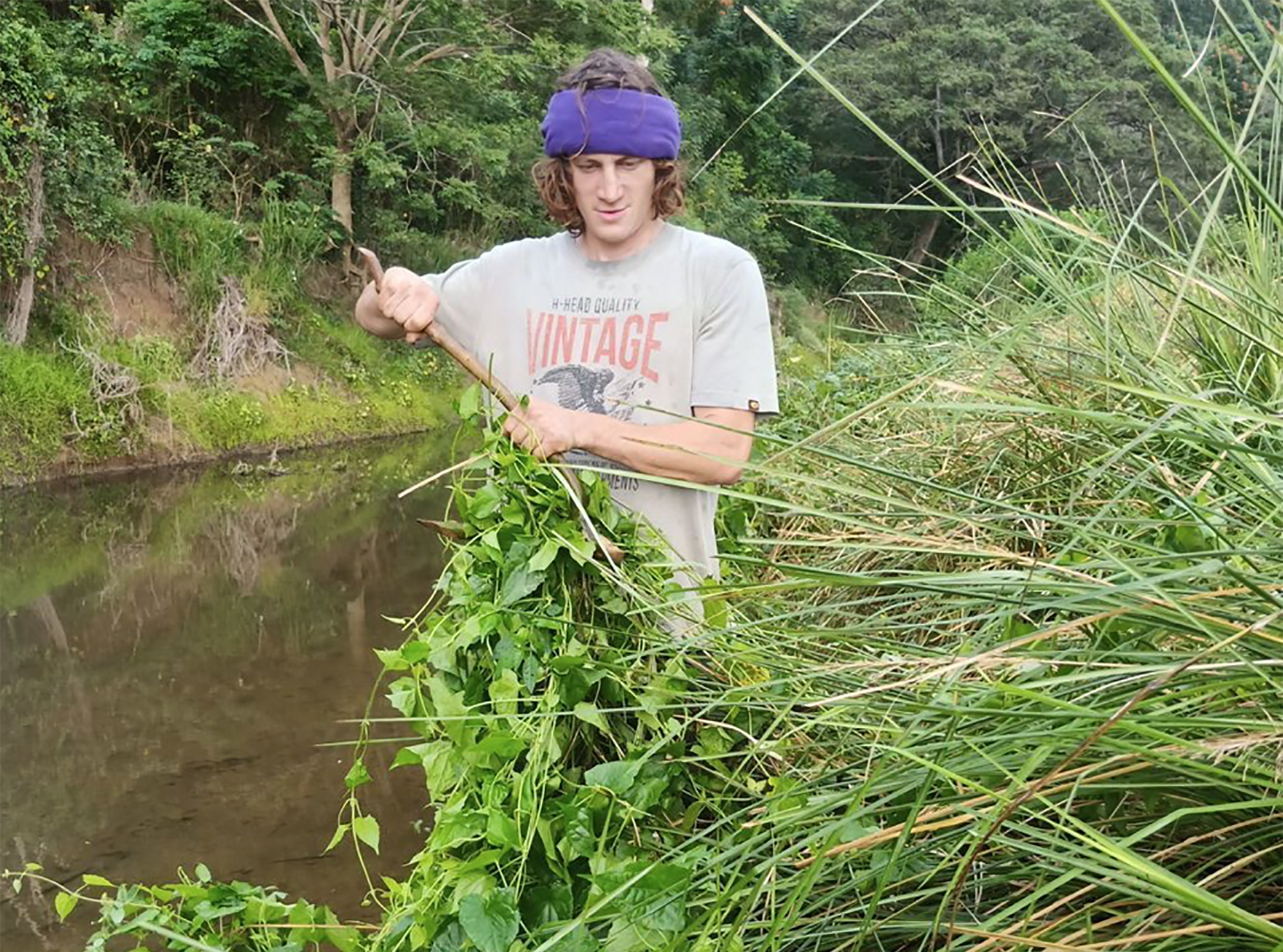

Building diverse, productive and resilient farming systems in Fiji
November 6, 2024

The Crawford Fund’s highly sought after Student Awards are one way we support and encourage the next generation of Australians into study, careers and volunteering in international agricultural research.
The awards are funded by our State and Territory Committees and made possible by organisations including ACIAR, international centres, Australian and overseas universities and NGOs who host our awardees.
Fifteen talented university students from around Australia were awarded our 2022 Student Awards. We would like to share the experience of Loic Fery, the last of this group to travel for his award because of COVID delays. Loic, from the University of Tasmania, travelled to Fiji to be immersed in ACIAR’s ‘Project Landcare – an agricultural extension and community development model at district and national scale’.
“The Crawford Fund granted me the opportunity, through my environmental science studies, to work, participate and research as part of the Australian Centre for International Agricultural Research (ACIAR) Landcare Fiji project,” said Loic.
“The Crawford Fund allowed me to connect to farmers, project leaders, extension officers and agroforestry scientists and gain experience into how local communities have been building diverse, productive and resilient farming systems,” he said.
“I immersed myself into Fijian agricultural systems and communities for two weeks in July 2024 which enabled me to explore further my passion for sustainable farming systems.
The project had four major components:
- Work, participation and research in: ACIAR Landcare – Livelihood Improvement through Facilitated Extension (LIFE) project
- Visits and discussions with Leader Farmers and Facilitators from sustainable agriculture Non Government Organisation (NGO) Teitei Taveuni and Nakavika community
- Planting and maintenance in the agroforestry riparian buffer zone being initiated through Fiji National University (FNU) and the LIFE project with the Nakavika farming community
- Forming connections with Fijian agrarian counterparts

After eight years working to support sustainable farming practices and improved livelihoods in the conflict-affected areas of the Philippines, ACIAR’s Landcare project ‘LIFE’ model is now being trialled in Fiji. It aims to bring smallholder farmers together to improve climate change resilience, management of natural resources, agricultural productivity and gender equality.”
“As established within the science of ecosystems ecology, more diversity correlates with more productivity and more resilience towards change. This central component of sustainable agriculture requires both innovation in systems design and dedicated management in order to work smoothly,” explained Loic.
“Both in Taveuni and Nakivika, I was shown the implementation of such diversification strategies and their early success. Lead Farmers, with the guidance and assistance of Teitei Taveuni’s work, Fiji National University and the ‘LIFE’ project have gone on to include: raising livestock like poultry and swine for nutrition and for increases in on-farm fertility loops, building seedling nurseries, agroforestry multi layered farming, intercropping and the transition towards sustainable organic fertilisers which promote greater diversity in the soil food web, and building soil fertility,” he said.
“One of the more pivotal learnings was witnessing the bottom-up extension approach taken through the collaborations on this project. Centring the focus on the communities’ most motivated and influential farmers showed clear success in creating many positive ripples throughout the local and wider agrarian communities.”
“The Lead Farmers are key cornerstones of their community for a number of reasons. Through their adopted farming practices they: set an example, empower community, cultivate knowledge, create an inter-generational seed bank, foster diverse ecosystems and build vital soil fertility for decades to come,” he said.
As part of FNU’s and ACIAR’s collaboration with the Nakavika community to implement a multi-purpose riparian buffer zone bordering the farmer’s fields with the annually flooding Sigatoka river, Loic was invited to be involved in talking to the farmers and understanding the initial challenges with the project’s uptake and find ways to re-strengthen it. The buffer zone seeks to stabilise the eroding sandy banks of the farmers fields whilst offering alternative income through a Tahitian chestnut crop and precious dry season fodder for the farmers’ bullocks.
Loic said that after four days of work in Nakavika with the farming community, it was clear that support and maintenance of the riparian buffer had continued following from initial works in 2023. However, due to a lack of animal fodder during the dry season, priorities to feed the cattle came out on top and as a result the zone was not fenced off and some of the new plantings and seedlings were lost.
“Across three days and some well earned river cool offs between time on the tools, young Leader Farmer Meli and I undertook maintenance and planting of over 50 extra Vetiver grass clumps as well as 26 new Tahititan chestnuts trees along the river bank.
“Going forward, in order to protect the young chestnut seedlings from grazing, the farmers agreed to build a multi-purpose living fence which will keep cattle out whilst offering fodder on the shoots of the recently planted posts. Branches from fast growing, leguminous trees cut to about two metres in height are plugged into the ground and commonly used around Fiji as living fences. Tied together with lengths of barb wire, they are a great way to fence livestock and offer them some valuable perennial based nutrition,” he said
Loic’s personal findings and conclusions from his Student Award experience can be summarised as:
- Forming connections beyond online networks is valuable, for building partnerships, sharing knowledge and keeping good relations.
- Diverse farming systems provides better economic prosperity, food security, ecological integrity and healthy communities.
- Community-based extension principles can rapidly enhance agricultural livelihoods by improving farmer-based learning networks and community social capital.
- Lead Farmers provide good emphasis and examples for surrounding agricultural networks and will be knowledge carriers for resilient and sustainable farming practice into the future.




 0
0